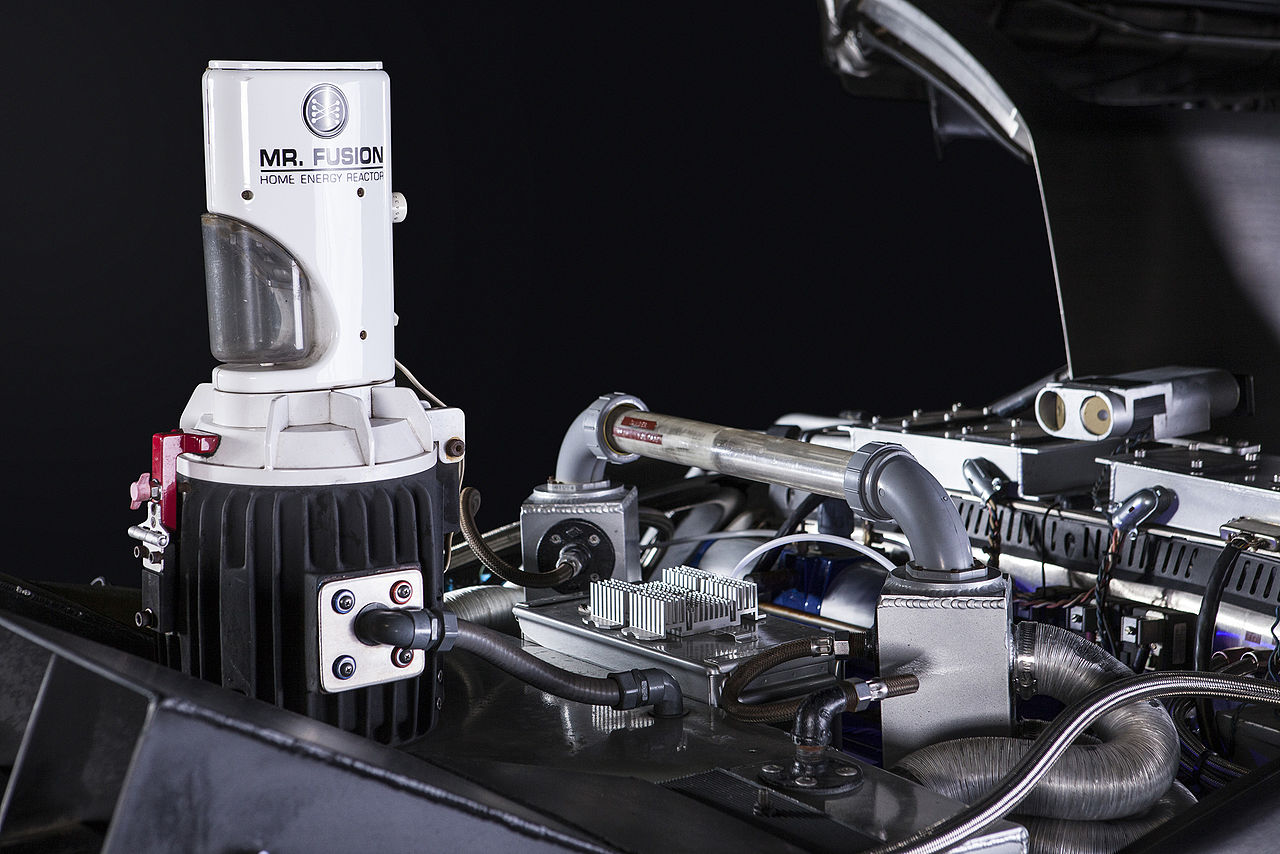This is the first entry in the FTL Deep End series. This series will cover topics that may not exactly have any connection to reality, but are never the less very interesting topics of discussion. This gives us a chance to have a bit of fun and explore theoretical subjects that may be just a bit too "out there" for our normal blog. For our first topic we decided to talk about something that is very dear to our hearts, that is the subject of time travel!
Time travel, specifically travel to the past, is firmly in the domain of science fiction, and there is very little actual physics to support the possibility of making it a reality. Time travel to the future is more plausible since relativistic time dilation allows for this (ignoring the fact that we are already traveling into the future one second at a time). We decided to put our heads together and contemplate ways that we might actually be able to achieve time travel to the past and future, at least theoretically. With that in mind, let me first say that what follows should be taken with a heavy grain of NaCl.
In fiction, time travel comes in three principle forms: fixed, dynamic, and multiverse. The fixed version of time travel, popularized by the film Twelve Monkeys, is the most basic. No matter what the time traveler does, they cannot effect the past in any way. In fact, their actions in the past have already occurred, so anything the time traveler does is already part of history before they even go back in time. The prime example of this is when, as a child, the main character of the film Twelve Monkeys witnesses his older self being shot and killed. The character goes on to live his whole life with this memory, but is completely powerless to avoid his ultimate end when he finds himself faced with the familiar circumstances of his death.
Dynamic time travel is the most problematic. It is responsible for the Grandfather Paradox, among other issues. If the past can be changed to effect the future, the problems start when the time traveler does anything to effect their own history. Back to the Future is the prime example of this. The film glosses over these inconsistencies and paradoxes by conveniently erasing the time traveler. So if you travel back in time and kill your grandfather, you simply fade away; but how then would you have existed to commit the grand-patricide in the first place? One of my favorite YouTube channels, Minute Physics, covers this topic in great detail. The solution is quite surprising!
Multiverse time travel is perhaps the most plausible. The time traveler not only goes back in time, but also spawns a tangent universe in the process. Therefore any influence they have is now confined to this new parallel universe. The downside is that it becomes very difficult for the time traveler to get back to their own universe. It is this form of time travel that actually has some basis in theoretical physics. We will talk more about his in Part 2.
Quantum mechanics does not differentiate between traveling forwards or backwards in time. The picture of physics on that scale cannot resolve the order of events or the direction of time. This is the reason why Feynman Diagrams are rotationally symmetrical. There is no way to tell which way the film is playing when all we can see is electrons bouncing around. There is simply not enough information on the quantum scale to know which way the arrow of time is pointing. This allows for some really interesting things. One example of this is antiparticles. A popular interpretation of antiparticles is that they are simply conventional particles that are traveling in the other direction in time. In other words a positron is actually an electron that has a negative time vector. In his great Cornell lecture series, Richard Feynman addresses these issues.
The distinction between the past and future only comes into the picture once we have collections of particles on the scale of compounds. The actual determining factor for the order of events is Entropy. To be more specific, it is not the direction of time which governs the past and future, but the probability of which event comes before or after. Entropy can be interpreted as the measurement of a system's likelihood of occurring naturally. In chemistry we learn about the Second Law of Thermodynamics, that the overall entropy of the universe increases over time. Thus in order to lower the entropy of a system we must do work on that system, and therefore we are simply moving the entropy from one place to another. This problem is best illustrated by the thought experiment Maxwell's Demon, named for the physicist who proposed it, Jame Clerk Maxwell. A closed system's entropy is reduced by an imaginary "demon" with the power to separate fast and slow moving particles by opening a trap door in a barrier. Scientists have actually constructed such a system by using lasers to separate particles and a powerful computer to control the lasers. But the cost of running such a device still increased the overall entropy of the universe, it just happened to heat up the server room instead of the lab! This article from Nature describes in detail the underlying problem with computational entropy reduction.
In his famous short story The Last Question, Isaac Asimov explored the ultimate result of increasing entropy, the heat death of the universe. In the story, the characters ask the question "How do we turn the stars back on?" The question is put to successively more powerful and clever computers over the course of about googol (10^100) years until the heat death of the universe finally arrives. By this time the computer has become so advanced that it achieves mastery of all time and space and it answers the question by example, it creates a new universe! In part 2 of this series on Time Travel we will explore how the solution to traveling backwards in time may just be a problem of information and computer science rather than physics!


